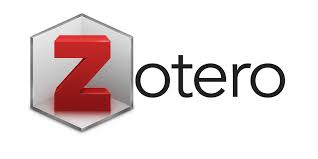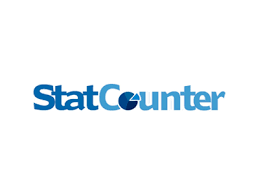Telaah Challenge Based Learning (CBL) Bernuansa Etnomatematika Berbantuan Instagram terhadap Kemampuan Berpikir Kreatif Matematis
DOI:
https://doi.org/10.29240/ja.v5i2.8642Keywords:
Challenge Based Learning, Ethnomathematics, Mathematical creative thinking abilityAbstract
Mathematical creative thinking ability is an important aspect in facing the era of disruption. Based on the results of PISA and TIMSS studies, the mathematical creative thinking ability of students in Indonesia is still low. Challenge Based Learning (CBL) presents an alternative solution to address this problem. On the other hand, ethnomathematics and instagram will bring their own meaningfulness to students' learning. The innovation of CBL with an ethnomathematics nuance, supported by instagram, becomes one alternative in developing mathematical creative thinking abilities. This study aims to describe the effect of CBL with an ethnomathematics nuance supported by instagram on mathematical creative thinking ability through a literature review. The literature review analysis was conducted on relevant national and international studies. The facts show that the use of CBL models makes students more creative and innovative, thus developing their mathematical creative thinking ability. The CBL framework integrated with ethnomathematics supported by instagram will provide a unique learning significance for students. The results of the literature review indicate that the innovative CBL model with an ethnomathematics nuance supported by instagram can have a positive impact on students' mathematical creative thinking ability.
Downloads
References
Akbar, R. R. A. (2018). Pengembangan Video Pembelajaran Matematika Berbantuan Media Sosial Instagram sebagai Alternatif Pembelajaran (Doctoral dissertation, UIN Raden Intan Lampung). Retrieved from http://repository.radenintan.ac.id/3618/
Amalia, S. R., Purwaningsih, D., & Fasha, E. F. (2021). Penerapan Problem Based Learning Berbasis Etnomatematika terhadap Berpikir Kreatif Matematis. AKSIOMA: Jurnal Program Studi Pendidikan Matematika, 10(4), 2507. https://doi.org/10.24127/ajpm.v10i4.4255
Ardiansyah, A. S., & Asikin, M. (2020). Challenging students to improve their mathematical creativity in solving multiple solution task on Challenge Based Learning class. Journal of Physics: Conference Series, 1567(2), 022088. https://doi.org/10.1088/1742-6596/1567/2/022088
Ardiansyah, A. S., Junaedi, I., & Asikin, M. (2018). Studentâ€TM s Creative Thinking Skill and Belief in Mathematics in Setting Challenge Based Learning Viewed by Adversity Quotient. Unnes Journal of Mathematics Education Research, 7(1), 61–70. Retrieved from https://journal.unnes.ac.id/sju/index.php/ujmer/index
Ardiansyah, A. S., & Pratama, N. T. (2021). Belajar dan Berwisata Melalui Objek Wisata Bledug Kuwu pada Bahan Ajar Materi Barisan. JURING (Journal for Research in Mathematics Learning), 4(4), 319. https://doi.org/10.24014/juring.v4i4.14115
Cahyadi, W., Faradisa, M., Cayani, S., & Syafri, F. S. (2020). Etnomatematika untuk Meningkatkan Kemampuan Pemecahan Masalah Matematis Siswa. Arithmetic: Academic Journal of Math, 2(2), 157-168. Retrieved from http://journal.iaincurup.ac.id/ index.php/arithmetic/article/view/2235
D’Ambrosio, U. (1985). Ethnomathematics and its place in the history and pedagogy of mathematics. For the Learning of Mathematics, 5(1), 44–48. Retrieved from https://www.semanticscholar.org/paper/Ethno mathematics-and-its-Place-in-the-History-and-D%E2%80%99ambro sio/94c53bb143d5dd4f9497a18455a768b2d5b9c5e5
Fairazatunnisa, F., Dwirahayu, G., & Musyrifah, E. (2021). Challenge Based Learning dalam Meningkatkan Kemampuan Berpikir Kreatif Siswa pada Materi Persamaan Linear Satu Variabel. Edukatif: Jurnal Ilmu Pendidikan, 3(5), 1942–1956. Retrieved from https://edukatif.org/ index.php/edukatif/article/view/702
Fajriyah, E. (2018). Peran Etnomatematika Terkait Konsep Matematika dalam Mendukung Literasi. PRISMA, Prosiding Seminar Nasional Matematika, 1, 114–119. Retrieved from https://journal.unnes.ac.id /sju/index.php/prisma/article/view/19589
Fujiawati, F. S., & Raharja, R. M. (2021). Pemanfaatan Media Sosial (Instagram) sebagai Media Penyajian Kreasi Seni dalam Pembelajaran. JPKS (Jurnal Pendidikan dan Kajian Seni), 6(1). Retrieved from https://jurnal.untirta.ac.id/index.php/JPKS/article /view/11602
Haqq, A. A. (2017). Implementasi Challenge-Based Learning dalam Upaya Meningkatkan Kemampuan Penalaran Matematis Siswa SMA. Jurnal THEOREMS (The Original Research of Mathematics), 1(2). https://doi.org/10.24235/eduma.v5i2.1125
Hidayati, S. et al. 2021. Pemanfaatan Sosial Media Instagram sebagai Media Pembelajaran: Studi Kasus Yayasan PGRI, Pondok Petir, Jawa Barat. Jurnal Pengabdian Kepada Masyarakat, 1(1), 22-29. Retrieved from http://www.openjournal.unpam.ac.id/index.php/Pekomas/article /view/9362
Irawan, A., & Kencanawaty, G. (2017). Implementasi Pembelajaran Matematika Realistik Berbasis Etnomatematika. Journal of Medives: Journal of Mathematics Education IKIP Veteran Semarang, 1(2), 74–81. Retrieved from https://e-journal.ivet.ac.id/index.php/matematika /article/view/483
Johnson, L. F., Smith, R. S., Smythe, J. T., & Varon, R. K. (2009). Challenge-based learning: An approach for our time. The New Media Consortium. Retrieved from https://eric.ed.gov/?id=ED505102
Kadir, L., & Satriawati, G. (2017). The implementation of open-inquiry approach to improve students’ learning activities, responses, and mathematical creative thinking skills. Journal on Mathematics Education, 8(1), 103–114. http://dx.doi.org/10.22342/jme.8.1.3406.103 -114
Leikin, R. (2013). Evaluating mathematical creativity: The interplay between multiplicity and insight. Psychological Test and Assessment Modeling, 55(4), 385. Retrieved from https://www.researchgate.net/ publication/259772063_Evaluating_mathematical_creativity_The_interplay_between_multiplicity_and_insight
Mandja, M. (2016). Penggunaan Aplikasi Instagram dalam Upaya Meningkatkan Motivasi Belajar Siswa Kelas VIII A di SMP Pantekosta Magelang Mengenai Materi Matematika Tentang Faktorisasi Bentuk Aljabar. Skripsi. Yogyakarta: Universitas Sanata Dharma.
Martin, M. O., Mullis, I. V. S., Foy, P., & Hooper, M. (2016). TIMSS 2015 international results in mathematics. Amsterdam, Netherlands: International Association for the Evaluation of Educational Achievement. Retrieved from https://www.iea.nl/publications/timss-2015-international-results-mathematics
Mashudi, M. (2021). Pembelajaran Modern Membekali Peserta Didik Keterampilan Abad ke-21. Al-Mudarris: Jurnal Ilmiah Pendidikan Islam, 4(1), 93-114. Retrieved from https://e-journal.iain-palangkaraya.ac.id/index.php/mdr/article/view/3187
Nichols, M., Cator, K., Torres, M., & Henderson, D. (2016). Challenge based learner user guide. Redwood City, CA: Digital Promise, 24–36. Retreived from https://www.challengebasedlearning.org/project/cbl-guide/
OECD. (2019). PISA 2018 Assessment and Analytical Framework. OECD publishing. https://doi.org/10.1787/b25efab8-en.
Saefudin, A. A. (2012). Pengembangan Kemampuan Berpikir Kreatif Siswa dalam Pembelajaran Matematika dengan Pendekatan Pendidikan Matematika Realistik Indonesia (PMRI). Al-Bidayah: Jurnal Pendidikan Dasar Islam, 4(1). Retrieved from https://jurnal.albidayah.id/home/article/view/10
Sari, M., & Asmendri, A. (2020). Penelitian Kepustakaan (Library Research) dalam Penelitian Pendidikan IPA. Natural Science, 6(1), 41–53. Retrieved from https://ejournal.uinib.ac.id/jurnal/index.php/ naturalscience/article /view/1555
Sari, R. N., & Siswono, T. Y. E. (2020). Pengembangan Media Pembelajaran Matematika Berbasis Media Sosial Instagram pada Materi Lingkaran di SMP. Jurnal Ilmiah Pendidikan Matematika, 9(1). Retrieved from https://jurnalmahasiswa.unesa.ac.id/index.php/mathedunesa/article/view/32940
Sari, S. Y., Sundari, P. D., Jhora, F. U., & Hidayati, H. (2020). Studi Hasil Bimbingan Teknis Pengembangan Perangkat Pembelajaran Berbasis Keterampilan Abad-21 dalam Rangka Penerapan Program Merdeka Belajar. Jurnal Eksakta Pendidikan (Jep), 4(2), 189–196. Retrieved from https://jep.ppj.unp.ac.id/index.php/jep/article/view/527
Silver, E. A. (1997). Fostering creativity through instruction rich in mathematical problem solving and problem posing. Zdm, 3(29), 75–80. Retrieved from https://link.springer.com/article/10.1007/s11858-997-0003-x
Supena, I., Darmuki, A., & Hariyadi, A. (2021). The Influence of 4C (Constructive, Critical, Creativity, Collaborative) Learning Model on Students' Learning Outcomes. International Journal of Instruction, 14(3), 873-892. Retrieved from https://eric.ed.gov/?id=EJ1304598
Wungguli, D., & Yahya, L. (2020). Pengaruh Penggunaan Media Berbasis Information and Communication Technology (ICT) terhadap Hasil Belajar Siswa pada Materi Dimensi Tiga. Jambura Journal of Mathematics Education, 1(1), 41-47. Retrieved from https://ejurnal.ung.ac.id/index.php/jmathedu/article/view/5376
Yazgan-Sag, G., & Emre-Akdogan, E. (2016). Creativity from two perspectives: Prospective mathematics teachers and mathematician. Australian Journal of Teacher Education (Online), 41(12), 25–40. Retrieved from https://eric.ed.gov/?id=EJ1131102
Yoosomboon, S., & Wannapiroon, P. (2015). Development of a Challenge Based Learning model via cloud technology and social media for enhancing information management skills. Procedia-Social and Behavioral Sciences, 174, 2102–2107. Retrieved from https://www.sciencedirect.com/science/article/pii/S1877042815013166?via%3Dihub
Downloads
Published
Issue
Section
Citation Check
License
Authors who publish with ARITHMETIC: Academic Journal of Math agree to the following terms:
- Authors retain copyright and grant the journal right of first publication with the work simultaneously licensed under a Creative Commons Attribution-NonCommercial-ShareAlike 4.0 International License (CC BY-NC-SA 4.0) that allows others to share the work with an acknowledgment of the work's authorship and initial publication in this journal.
- Authors are able to enter into separate, additional contractual arrangements for the non-exclusive distribution of the journal's published version of the work (e.g., post it to an institutional repository or publish it in a book), with an acknowledgment of its initial publication in this journal.
- Authors are permitted and encouraged to post their work online (e.g., in institutional repositories or on their website) prior to and during the submission process, as it can lead to productive exchanges, as well as earlier and greater citation of published work (See The Effect of Open Access).







